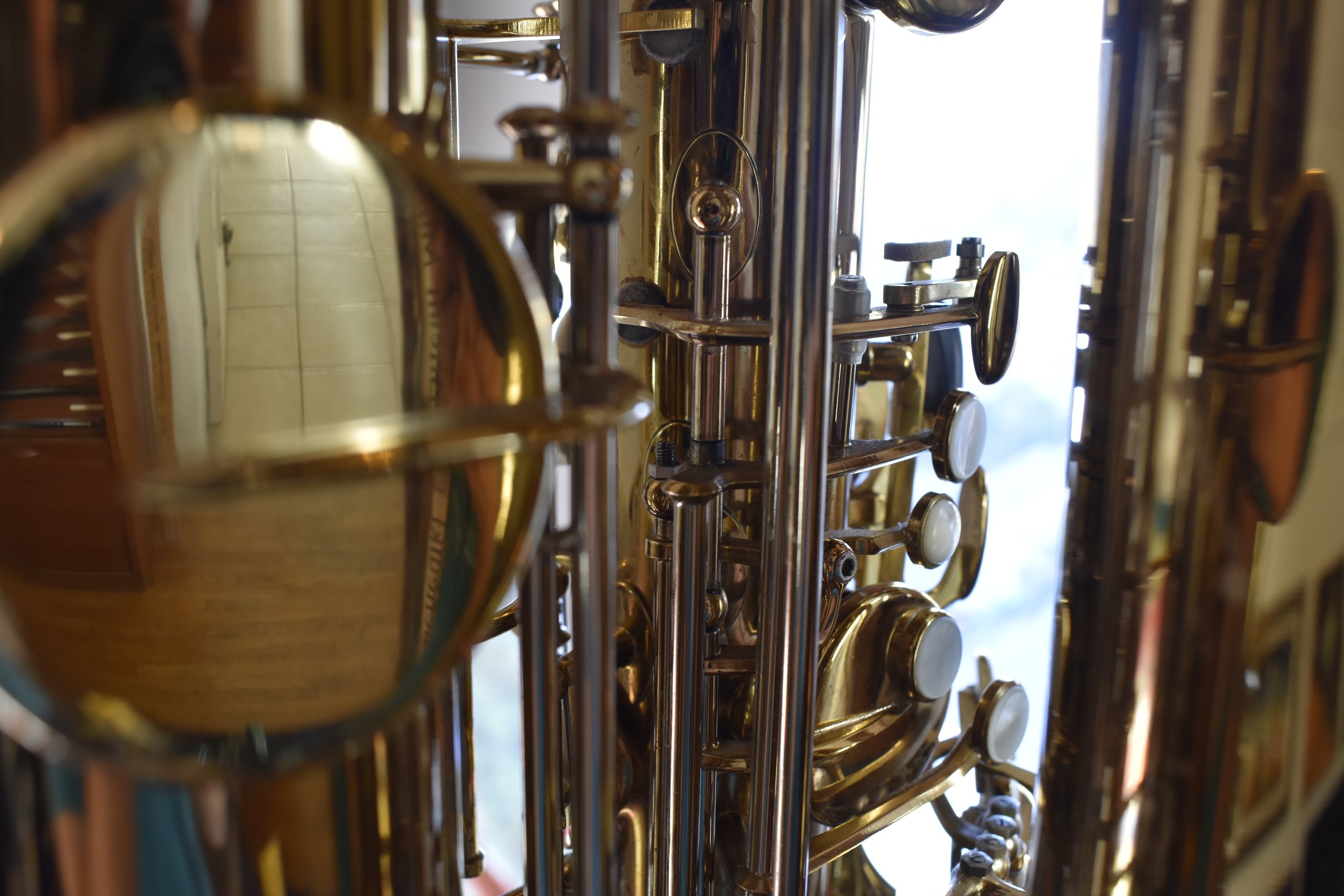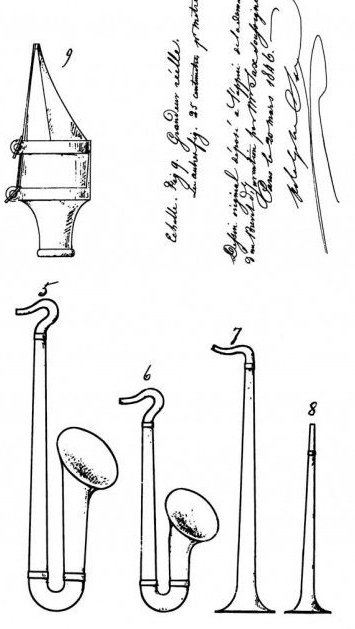
what is a tubax?
The Tubax is a reproportioned contrabass saxophone developed in the late 1990s by the instrument maker Benedikt Eppelsheim.
150 years earlier, Adolphe Sax created the saxophone in a wildly successful attempt to meld the projection of brass instruments with the facility of woodwind instruments. His original patent showed eight conical bore instruments, in different shapes and sizes, built with metal bodies like brass instruments and single-reed mouthpieces and tone holes like woodwind instruments, including (L-R) “bourdon saxophone in C, contrabass saxophone in G, saxophone in C, tenor saxophone in Eb…” [corresponding now to subcontrabass in Bb, contrabass in Eb, bass in Bb, baritone in Eb]
“…and four more smaller saxophones in the same key as those mentioned but an octave higher." [corresponding now to tenor in Bb, alto in Eb, soprano in Bb, and sopranino in Eb)
On the smaller end of the saxophone family, the Bb soprano, Eb alto, Bb tenor, and Eb baritone have become widespread and recognizable. Bass saxophones in the key of Bb, pitched an octave below the tenor, are less common but remain visible. Contrabass saxophones in Eb, an octave below the baritone, are rare and unknown. A handful were produced in the early 20th century but were found to be impractical given the unwieldy size and massive differential of air volume required across the range.
At over 6’8” and 45 lbs, transporting the instrument and maneuvering onstage presents quite a challenge, and owing to the enormous size of the cone flare required at the end of the nearly 15 feet length of wrapped tubing, (the bell is roughly 16 inches in diameter), the volume of air moving for the lowest notes is exponentially larger than that of the highest notes. This makes it difficult to control with consistent dynamic and tonal variance, and though a few makers restarted production in the late 20th century, the instrument languished in obscurity.
enter the tubax
Benedikt’s ingenious design preserves the length of tubing from the contrabass saxophone but cuts the cone flare ratio approximately in half, similar to the ‘bourdon saxophone in C’ from Adolphe Sax’s original patent. The halved length-to-flare ratio means the volume of air being moved for lower notes is exponentially lower than it would be on the contrabass saxophone, making it much easier to control at all dynamic levels and giving it a more consistent tone quality across the range. With the bore of a baritone on both the smaller (mouthpiece) and larger (bell) sides and a length of tubing that is twice as long, the instrument is not really a saxophone as we know it today, but, with nearly identical keywork and materials, sounds and plays like a saxophone.
Throughout the length of the instrument, the smaller tube diameter makes it far more compact, allowing it to be wrapped like a paperclip which makes it much shorter in comparison to a true contrabass. The side profile of a tubax looks astonishingly similar to a baritone saxophone, though hiding behind it is another full length of tubing down and back up.
This arrangement yields a radical redesign of the rods and pads, but aside from the two hands being directly next to each other (as opposed to left above right), the keywork for the performer is ergonomically identical to that of a saxophone.
The instrument uses an endpin and is most comfortably played sitting, using a baritone or bass saxophone mouthpiece and reed.
though on occasion it can be played standing up
Now go check out WRITING FOR TUBAX









